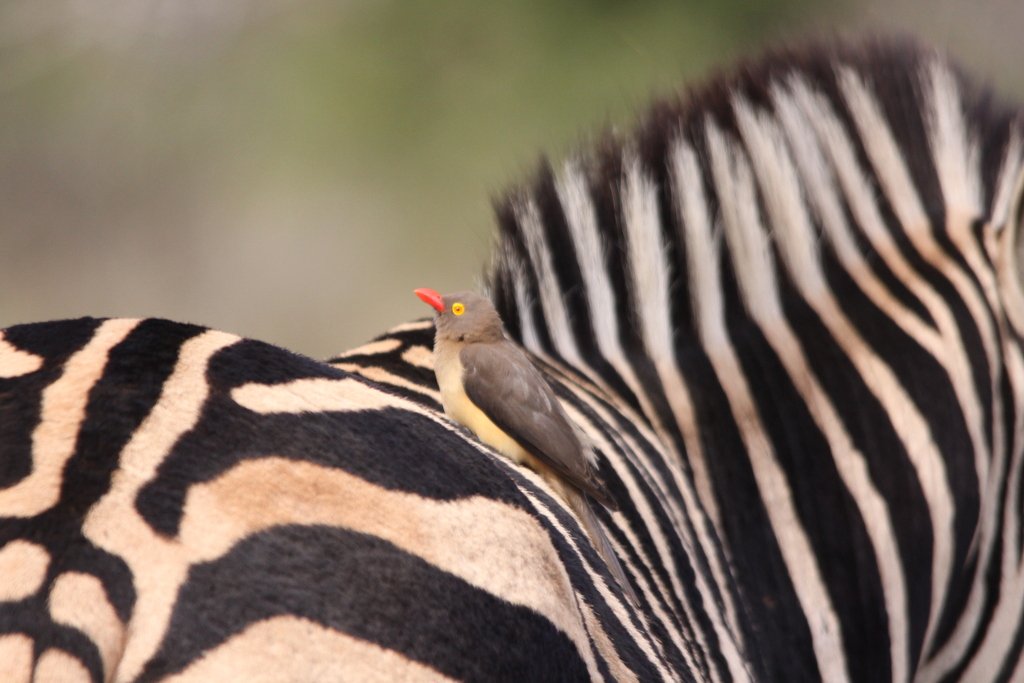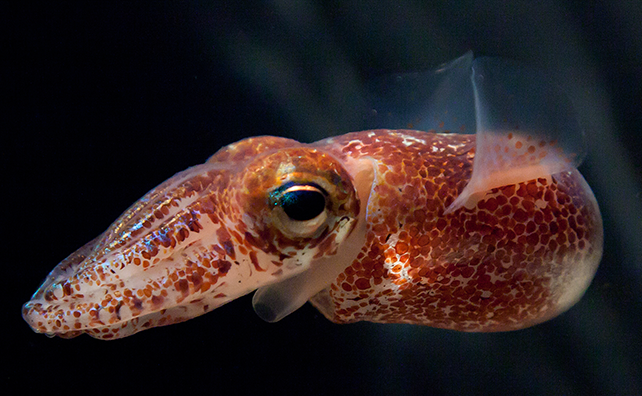The unsolved questions of evolutionary theory. What is an individual?

Charles Darwin devoted his entire life to the exploration of nature. Before publishing (in 1859) the Origin of Species, his masterpiece, he had assembled a huge body of knowledge based on decades of observations and experiments. His personal view of the natural world was determined by years of fieldwork and theoretical studies, books and essays he had read. His vision was deeply influenced by the cultural values of his time, according to which interactions between organisms and the environment were seen as a constant “struggle for existence”, an endless conflict in which only the most “adapted” individuals managed to survive.
For a long time, modern biology did not question this core principle, based on competition between individuals. On the contrary, this perspective was applied to all levels of the evolutionary processes, from the macroscopic (the conflict among species within ecosystems) to the microscopic one (think of the famous theory of the “selfish gene” by Richard Dawkins).
However, even during the twentieth century, this evolutionary perspective centred on competition was timidly criticised. Some evolutionary biologists expressed doubts about the adequacy of the dominant paradigm, and some even proposed alternatives. For example, Lynn Margulis, an American microbiologist, proposed new theories that were quite incompatible with the “Modern Synthesis”. Her extraordinary discoveries in microbiology laid the foundations for a genuine revolution in our understanding of evolution and life itself.
Today, evolutionary biology is still Darwinian at its core, but it has been radically revised and extended to include new discoveries and theories. One important innovation concerns the current understanding of the concept of individuality, which traditionally regarded the individual as an indivisible “atom”, the leading character of all evolutionary dynamics. Thanks to the theories proposed by Lynn Margulis and few others, in recent years scientists have painted a completely new picture of the phenomenon of life. According to this new perspective, the main driver of biological evolution is not competition, but rather cooperation. In other words, only the existence of cooperation makes evolutionary dynamics possible. Moreover, some argue that cooperation may have been of utmost importance for the appearance of the first life forms.
Watch the interview with Scott Gilbert. Filming: Sofia Belardinelli. Editing: Elisa Speronello
Life is cooperation: a heresy within evolutionary biology
Lynn Margulis was the first to develop the revolutionary theory of endosymbiosis. Studying the cellular structure under a microscope, she realised that within each cell there are small organelles, mitochondria, which nearly resemble real organisms. She hypothesised that this similarity was evidence of a former self-sufficiency of mitochondria. Thus, these organelles might be the remote descendants of bacteria which, at a certain point in their evolutionary path, formed a symbiosis with different cell types, giving rise to eukaryotic organisms.
This discovery was greeted with skepticism by the scientific community. The idea seemed almost heretical, as it undermined two fundamental pillars of the “modern synthesis” of evolutionary theory, i.e., the dogma of competition and the principle of individuality. Over time, however, Margulis’ intuitions were validated, and now cooperation is widely recognized as an evolutionary mechanism as fundamental as competition.
Scott Gilbert, Emeritus Professor of Biology at Swarthmore College and the University of Helsinki and one of the world’s leading experts in biology and developmental ecology, explains that this revolutionary idea has profoundly influenced every are of biological research, including molecular biology. «The problem in identifying what is the fundamental unit of life is closely linked to the issues of individuality and competition. In fact, on this subject there are two competing schools of thought: on the one hand, those who take the presence of metabolic activities as relevant for defining life, and on the other hand, those who give importance to the ability of an entity to self-replicate.
In the first case, the cell is the fundamental unit of life, because, thanks to metabolism, it is able to maintain its identity while constantly changing its parts. In this respect, the German philosopher Hans Jonas claimed that “organisms do not have metabolism, they are metabolism”. And this is the approach of biochemistry. In the second case DNA, the basic unit of replication, acquires much more importance. And this, in turn, is the perspective of molecular biology.
In my view, the essential feature of life is metabolism rather than self-replication. However, these two characteristics may not be mutually exclusive: for example, in 1896 Edmund B. Wilson stated that “inheritance is the recurrence in successive generations of similar forms of metabolism”. Based on this holistic point of view, a “metabolic” definition of life is now widely accepted, that in turn acknowledges the importance of DNA and replication. Metabolism and replication are both essential features of a living organism».

No one is an individual
New evidence comes from recent biological discoveries, which further challenge the traditional view of individuality. Holobiont theory, first developed by Lynn Margulis, states that every organism (which we consider a synonym for “individual” in common language) hosts a complex ecosystem of other organisms living together in symbiosis and constantly cooperating with each other.
«All we know about living beings is that each organism is the product of one individual (be it the fertilized egg, a rhizome, or a seed) and that it contains one genome and one lineage», Scott Gilbert argues. «The holobiont theory is proving this wrong. It is indeed true that the “single” organism acquires its genes through vertical transfer from its parents. However, this is not the whole story: a huge number of bacteria and other microorganisms contribute to ontogenetic development. These microorganisms are an integral part of the organism». Thus, individuality gives way to unexpected plurality.
«The multitude of living beings that make up the holobiont are fundamental to the survival of the host. They regulate its anatomy, physiology, immunology, development and even its behaviour». No individual is truly indivisible, therefore. «Each of us is a whole biome, a set of ecosystems, rather than a self-sufficient individual », Professor Gilbert notes.
«Lynn Margulis knew this. In this startling new understanding of life, natural selection is not useless, but its role is downgraded. In other words, it may not be the main driver of evolutionary dynamics, but only come into play at a later stage, to help the organism adapt to its environment and to avoid extinction. Evolutionary dynamics can be represented as an artistic process, where development is the artist taking on the creative work. For example, it is during the developmental stages that new phenotypes emerge. Natural selection, on the other hand, can be seen as the editor, picking up the most interesting innovations and throwing away the others. Most evolutionary creative explorations do not last long. It is not only the most suitable life forms that survive, but those best suited to live together, that are able to cooperate and to co-evolve.
However, the view of nature based on cooperation is anything but idyllic, and conflict is still an important component of it. Competition and “survival of the fittest” are still in place, acting at the level of the holobiont. Whether some organisms associate, many others are brutally excluded from that symbiosis, and often eliminated. We may think of the organism as a team, and the competition to join that team is high».

Philosophy of plurality. Life is about reciprocity and cooperation
This new biological perspective leads to crucial philosophical considerations. Showing that individualism and competition are not the core of evolutionary processes directly undermines anthropocentric theories, which have justified our predatory behaviour towards the rest of the natural world for centuries. Moreover, scientific evidence showing that “higher” taxa depend on “simpler” organisms such as bacteria, viruses and fungi for their very existence challenges our supposed independence from nature and our faithful reliance on technologies. Instead, we should reflect on the role of interconnections and interdependence between all life forms, which reveals the ecological vulnerability of a young and arrogant primate species.
«Such discoveries stimulate important philosophical reflections», Gilbert confirms, «and a growing number of philosophers is working on these issues. One of the most important thinkers in this field is Donna Haraway. She identifies two core principles to define life as cooperation.
The first: “Life is entanglement”, purity does not exist. Each individual is a community of organisms, is a whole ecosystem in itself, and part of a larger environment at the same time. Our internal components and environmental stimuli are constantly changing us, so that we are never the same, yet we remain ourselves.
The second principle recognises as an essential feature of life the fact that individuals become with others. And that is not a metaphor, it is real. We come into existence, we develop, in association with microbes and with the organisms that bring those microbes to us. So, we are not defined solely by our parents, but we are largely defined by the other 50% of the cells in our body, the microbes. We become with others, and the environment is essential in our coming into existence.
Moreover, following Lynn Margulis, Donna Haraway stresses the fact that cooperation is what makes life possible. Many processes that are essential to life on Earth to thrive are built on symbioses: think of nitrogen fixation, carried out by bacteria of the Rizhobium genus, or mycorrhizae, microscopic associations between fungi and roots that are vital for many plants, or corals, one of the most spectacular examples of symbiosis, on which the existence of entire ecosystems depends. Competition is now recognised as a minor mechanism of evolution: some have even suggested that it could be a form of cooperation».
Other important implications that go beyond philosophical thinking are the ethical questions that arise from this new perspective on life. If life is built on cooperation, it is likely that the first rule of life is reciprocity. As Gilbert suggests, «Perhaps it is no coincidence that many Eastern philosophical traditions and the worldviews of many Indigenous societies have reciprocity at their core».
Donna Haraway (a former biologist) defines it as “reciprocal induction”, a scientific term that indicates the reciprocal interactions and modifications that occur between the different organs during the early stages of the ontogenetic development. According to the philosopher, relationships, not entities, are the smallest pattern (not unit) of analysis. And, regarding the question of what defines life, the holobiont shows that metabolism, not replication, is what makes an organism alive».
Competition and battles, victories and defeats are fascinating: that is why this interpretation of life has been successful. «We, as a species, love to tell stories. It is the stories we tell, and how we tell them, that shape our worldviews», Scott Gilbert comments. However, the reality does not seem to be as captivating as our narratives of it, and nature does not seem to be “red in tooth and claw”, after all. «Today we are on the brink of the Sixth Mass Extinction and in the midst of a planetary crisis. Therefore, we might want to put aside compelling stories and start narrating the reality of cooperation, co-evolution, and reciprocity. We may find that these are the stories we really need in order to take new and better paths».









